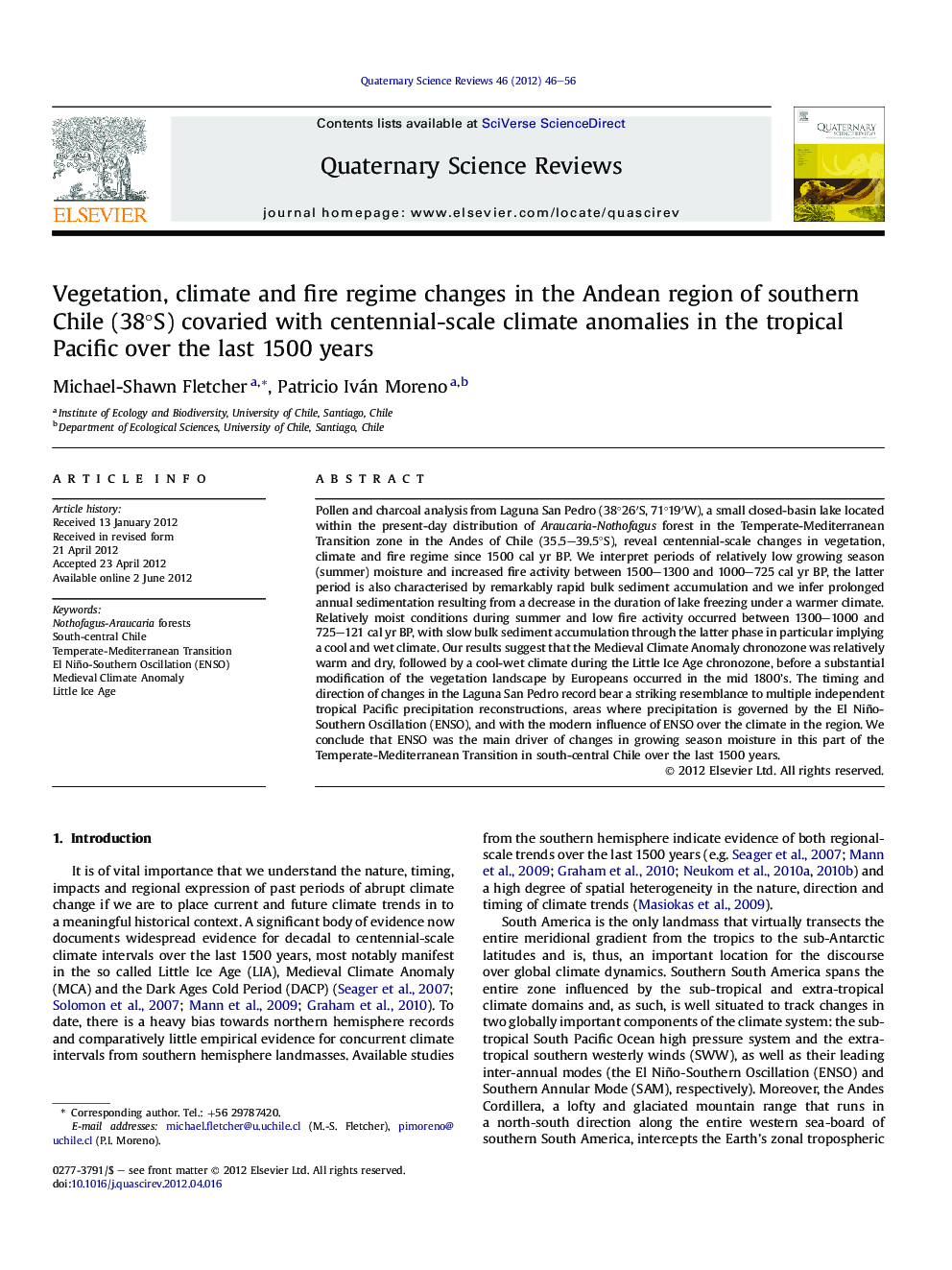| کد مقاله | کد نشریه | سال انتشار | مقاله انگلیسی | نسخه تمام متن |
|---|---|---|---|---|
| 4735447 | 1640888 | 2012 | 11 صفحه PDF | دانلود رایگان |

Pollen and charcoal analysis from Laguna San Pedro (38°26′S, 71°19′W), a small closed-basin lake located within the present-day distribution of Araucaria-Nothofagus forest in the Temperate-Mediterranean Transition zone in the Andes of Chile (35.5–39.5°S), reveal centennial-scale changes in vegetation, climate and fire regime since 1500 cal yr BP. We interpret periods of relatively low growing season (summer) moisture and increased fire activity between 1500–1300 and 1000–725 cal yr BP, the latter period is also characterised by remarkably rapid bulk sediment accumulation and we infer prolonged annual sedimentation resulting from a decrease in the duration of lake freezing under a warmer climate. Relatively moist conditions during summer and low fire activity occurred between 1300–1000 and 725–121 cal yr BP, with slow bulk sediment accumulation through the latter phase in particular implying a cool and wet climate. Our results suggest that the Medieval Climate Anomaly chronozone was relatively warm and dry, followed by a cool-wet climate during the Little Ice Age chronozone, before a substantial modification of the vegetation landscape by Europeans occurred in the mid 1800's. The timing and direction of changes in the Laguna San Pedro record bear a striking resemblance to multiple independent tropical Pacific precipitation reconstructions, areas where precipitation is governed by the El Niño-Southern Oscillation (ENSO), and with the modern influence of ENSO over the climate in the region. We conclude that ENSO was the main driver of changes in growing season moisture in this part of the Temperate-Mediterranean Transition in south-central Chile over the last 1500 years.
► Low summer moisture and increased fire activity prevailed between 1500–1300 and 1000–725 cal yr BP.
► Moist summers and low fire activity prevailed between 1300–1000 and 725–121 cal yr BP.
► Relatively warm conditions prevailed between 1000 and 725 cal yr BP (the Medieval Climate Anomaly).
► Relatively cool conditions prevailed between 725 and 121 cal yr BP (the Little Ice Age).
► We posit a tropical ENSO driver for these trends.
Journal: Quaternary Science Reviews - Volume 46, 16 July 2012, Pages 46–56